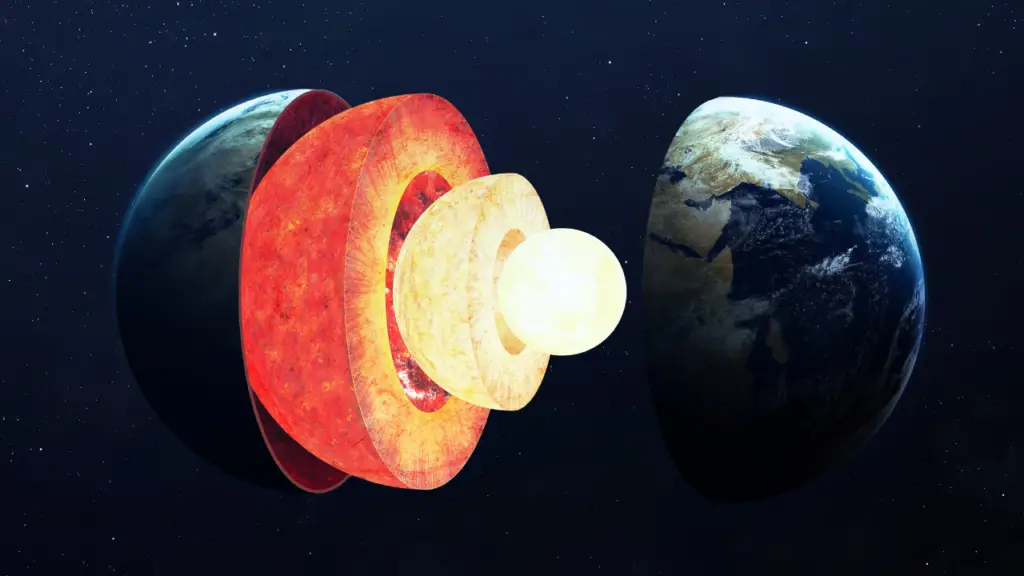Earth’s inner core is one of the basic solid layers that play a vital role in generating Earth’s magnetic field. A recent study revealed that the rotation of Earth’s solid inner core may have stopped spinning and could be reversing to rotate in opposite direction.
Scientists that participated in this study provided proof of how the oscillation in the rotation of the inner core relates to periodic changes in the Earth’s surface system. they also revealed the interaction that exists between different layers of our home planet. Why did the Earth’s inner core reverse its rotation? Should we be worried about these changes? Continue reading to find out.
Why the Earth’s Inner Core may have reversed its rotation
The Earth’s inner core is one of the most interesting parts of our home planet that have captured the interest of our scientists. This is because the inner solid core is separated by a liquid outer core from the entire solid Earth. This separation makes the inner core spin differently from the original rotation of Earth around its axis. The rotation of the Earth’s inner core is caused by the magnetic field generated in the outer core.
This produced magnetic field is balanced by the gravitational effects of the mantle. The study authors Scientists Xiaodong Song and Yi Yang of China’s Peking University revealed that they studied the difference in the waveform and travel time of seismic waves emanating from closely related earthquakes that have crossed the Earth’s inner core since the 1960s. From their analysis, they realized that paths through which the earthquakes passed since around 2009 have slight temporal variation and possess small changes.
These little changes made the researchers think that the inner core rotation may have paused. They further analyzed the discovery and concluded that little changes might exist due to the revere of the inner core rotation as part of a seven-decade oscillation and the last turning point occurrence took place in the 1970s. The researchers suggest that the changes may be related to the geophysical observations occurring at Earth’s surface. Some of these observations include changes in the length of the day and the magnetic field.
“In theory, it has been going on for a long time but we only have observations over a few decades,” said Xiaodong Song, a seismologist at Peking University in Beijing and a co-author of the study.
If scientists could understand how the Earth’s core spins, they can easily learn how different layers of the Earth interact with each other. The authors of this study focused on studying the seismic waves from similar earthquakes. From their research, they discovered that between 2009 and 2020, the rotation of Earth’s inner core might have stopped rotation and reversed in direction.
“It is like we are doing a CT scan for the Earth [when] we have those repeating earthquakes that happen at the same location,” Dr. Yang said.
The study authors published their findings in the Journal of Nature Geoscience.
While the authors of this study arrived at a conclusion, John Vidale, an American-born seismologist who is an expert in studying seismograms suggests that there may be additional interpretations of the seismic data.
“The changes they noticed are valid although what’s actually happening isn’t so clear,” Dr. Vidale said in an interview with WSJ. “They have a very good analysis and the theory they put in the papers is probably as good as anything at the moment, but there are several competing ideas as well.”
Some researchers believe that Earth’s core reverses its rotation at a shorter interval than the regular 70-year cycle suggested by the new study. Others theorize that the core rotation may be affected by the Earth’s surface like the movement of ocean currents and tectonic plates. However, newer studies in the future will enable scientists to learn more about what causes the rotation of the earth’s inner core to reverse and spin in a different direction.
Should we be worried about the Changes in Earth’s Inner Core?
The change in the rotation of Earth’s inner core may begin to trouble your mind. However, you have nothing to worry about as the reverse in Earth’s core cannot stop the Earth’s rotation. The discovery is going to help scientists learn more about the Earth’s surface system.
Researchers believed that the solid core contributed to the formation of Earth’s magnetic field which has been protecting life on Earth’s surface from dangerous solar radiation. This implies that the core can affect Earth’s distribution of heat and possibly create a slight change in the length of the day.
Conclusion
Scientists are beginning to explore new areas of science with this recent discovery. In fact, we should be expecting more fascinating studies about the Earth’s core and other layers in the future. As we look into observing the Universe, we are also working on understanding how Earth’s surface and inner systems operate. What do you think about this new fascinating study?




